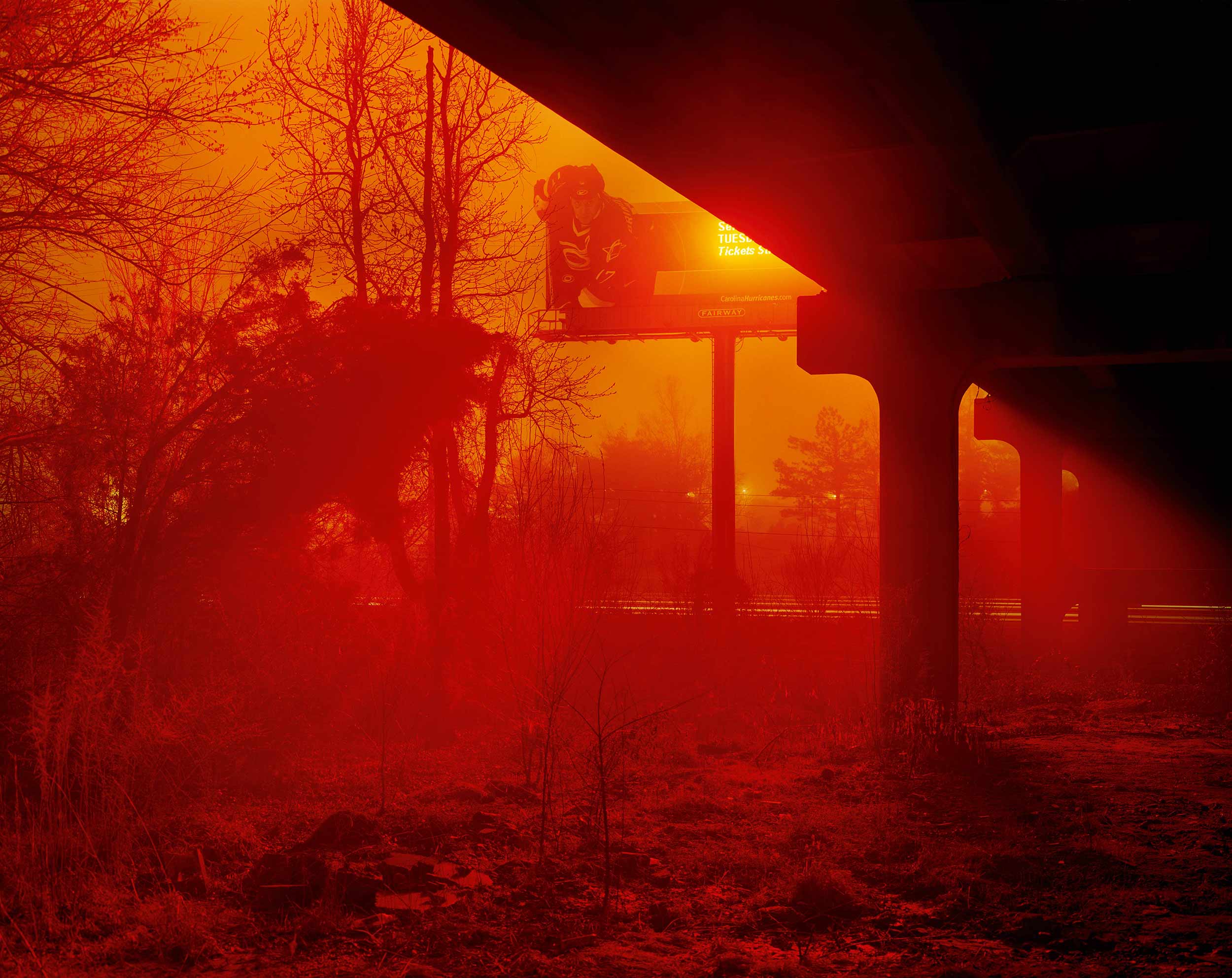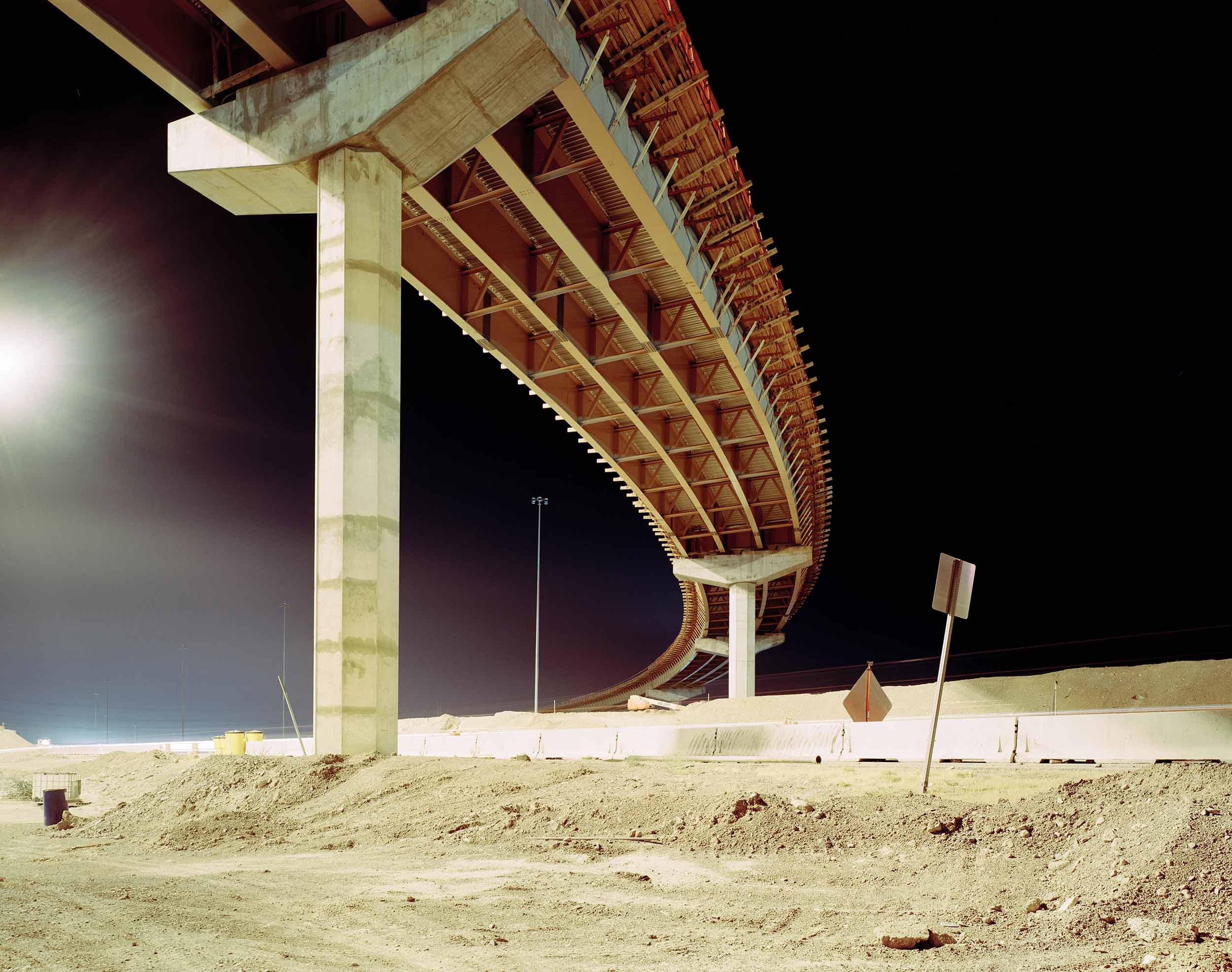
Is the walkability-car divide another front in the so-called ‘culture wars’? Drew Zeiba explores the online proliferation of the new urbanist
“Bus Driver Life #Bliss,” a TikTok rip posted on YouTube is titled. The 20-second video follows a day in the life of a Sydney bus operator as he enjoys a McDonald’s meal, stops by the beach (in uniform), refuels, clocks out. “This is why everyone wants to be a bus driver,” reads a Reddit post linking to the clip in r/NUMTOT, short for “New Urbanist Memes for Transit-Oriented Teens.” The 3.8k-member subreddit is a spin-off of a Facebook group of the same name, which has about as big a population as San Bernardino, California. However, the five-year-old community—which began as “New Urbanist Shitposting”—is hardly the only place where one can happen upon such urban-planning content online.
Social platforms are rife with design takes. Recent memes I’ve seen include a tweet reading, “this kind of smart, walkable, mixed-use urbanism is illegal to build in most American cities,” with a picture of a Neopets landscape, and a TikTok view of a strip mall overlaid with typical Boomer discourse. “Why won’t the kids go outside these days?” a line of text reads. “The outside they created,” it continues, panning to the desolate, consumerist landscape. Transit authorities themselves have caught on: The official Amtrak account all-too-appropriately tweeted, “no thoughts. just trains <3.”
Some content doesn’t take comedic form (or promote underfunded private-public transit systems), but rather expresses genuine frustration around American infrastructure. A number of educational and activist-oriented accounts also populate social media apps, such as TikTok users @yesinmybackyard (“DALL-E can ‘design’ walkable streets!”) and @talkingcities. (“Car enthusiasts should support public transit!”) Yes In My Backyard is often abbreviated to YIMBY and YIMBYism, for one camp that supports the construction of denser affordable housing. These US-based accounts focus on the purported superiority of light transit, rail systems, and urban design in countries like Spain, China, and Japan. Others, like @elevatedchicago, advocate for transit-oriented cities from inside a critique of them. A TikTok from this June, for example, traverses Chicago’s 47th Street Red Line stop, noting the sidewalk condition (“not in good shape”), the landscaping (“overgrown”), and the design of nearby businesses (“oriented towards cars”). “This stop definitely could benefit from development that could be used by people taking the train, or walking or rolling to transit,” concludes Jannice Newson, the clip’s narrator.
Where there are YIMBYs, there are NIMBYs. Is the walkability-car divide another front in the so-called “culture wars”? Automobile ownership has risen throughout much of the world, but car culture retains a uniquely Americana tinge. Perhaps this is best evidenced by the road movie—a global phenomenon now, but a genre with a particular prevalence and purchase in Hollywood. From Bonnie and Clyde to Crossroads, each year brought a new release. Iconic Euro road movies like Weekend riffed on the Californian form. Though there are exceptions (Get on the Bus and To Wong Foo), the US genre is largely white and homosocial, often featuring a heterosexual romantic pairing. Some fully realize that pairing’s promise, like National Lampoon’s Vacation, with its perfectly imperfect “all-American” family. Others center crime, getaway, and the shedding, discovery, and repurposing of identity.
Despite perennial tweets about how gays (or, as I saw more recently, Marxist intellectuals) can’t drive, Lana Del Rey has made a cottage industry of twinks who overidentify with the mythological open road. From Kerouac to the Kardashians, the imagery of the automobile is the imagery of a certain type of “America.” Yet, amid a climate crisis, spiraling gas prices, and flagging economic prospects, demanding “walkable cities” has become its own sort of subculture that, 10-plus years ago, garnered mainstream headlines, hand-wringing over millennials rejecting the ’burbs—as if most of the country, including most of that generation, didn’t already live in cities. Each era needs its yuppies.
When I was a kid, shows like Pimp My Ride and early Grand Theft Auto games were afterschool centerpieces; for decades, popular songs and mainstream media have signaled supercar marques and arrest-warranting speeds—to say nothing of country music. While there are plenty of “urbanist” memes, practically half of social media videos, it seems, are filmed from the driver’s seat.
Living in Manhattan (where car ownership is not the norm, notwithstanding the city’s more than 3.6 million licensed drivers and 254 traffic deaths last year), it’s easy to forget the extent to which the car circumscribes daily life for many. However, while writing this article, I’ve found myself recuperating from an accident that’s rendered a walk-up apartment off an elevator-less subway stop impossible, although I could hypothetically reach many basic needs via a five-minute walk or 15-minute crutch swing. I’m now in my northern New England hometown, where car non-ownership precludes basic access to necessities, let alone employment. This wasn’t always the case, even post-Model T: In the early-20th century, when manufacturing and agriculture jobs still existed in this area, the town was densely centered around a main core which had a trolley line that spread out to the nearby “big city,” and to towns that remain pastoral today. However, when factories shuttered and jobs disappeared, it caused a cascade of business and service closures, forcing people to commute to bigger cities like Boston for work. Many moved away, rather than stay in a postindustrial wasteland. That was until the creation of the Eisenhower interstates—a pet project of motor companies and military strategists, necessarily concomitant with the “innovation” of the postwar suburb, and both a symptom and cause of white flight. It brought this sunsetting town a population boom, and with it, decentralized businesses accessible only by car—cars which many still rely on to drive to work.
It wasn’t just rusty towns and sleepy farm communities impacted by highways; bustling cities were targeted for high-speed automobile development, too. Famously, Lower Manhattan was nearly paved over, as recounted in the sort of US urbanist ur-text, The Death and Life of Great American Cities, by Jane Jacobs. While downtown was spared, New York City did get highways—for example, the Sheridan Expressway, which shuttles commuters from Westchester and further north by bisecting the Bronx, much to the borough’s detriment. Other urban centers—including those that seem inexorably car-focused, like Los Angeles—once had robust streetcar networks. Cars increasingly crammed roads in the early-20th century, but it wasn’t until the ’50s and ’60s that highways swooped in, systematically—often intentionally—targeting majority-Black neighborhoods, as was the case with the I-10’s destruction of Sugar Hill in LA. Some cities, including Syracuse, Rochester, Detroit, and New Haven, plan to or are currently tearing down these highways to build walkable neighborhoods. But a 2021 report from the Los Angeles Times found that, in cities like Houston and Tampa, eminent domain to expand highways is still disproportionately deployed in BIPOC-majority areas. Some neighborhoods originally gutted in the mid-20th century are slated for demolition again.
“From Kerouac to the Kardashians, the imagery of the automobile is the imagery of a certain type of ‘America.’ Yet, amid a climate crisis, spiraling gas prices, and flagging economic prospects, demanding ‘walkable cities’ has become its own sort of subculture.”
Communities of color receive the brunt of commuter exhaust pollution, while receiving less public transit and bike safety investment. Citi Bike, for example, has long been criticized for its docks heavily favoring blocks where the median income is nearly six figures, predominating in Manhattan (population 1.6 million; median household income $90,000), while almost exclusively serving the Midtown commuter-favored edges of Queens (2.3 million; $72,000), and only recently committing to more docks in the Bronx (1.4 million; $42,000). This summer, the Bronx got a much needed revamp to its bus system, but it still has the worst escalator service to its comparably limited above-ground subway stations. On social media, battle lines were redrawn on Brooklyn meme maps that divided Bushwick and Greenpoint, for example, from Park Slope and Crown Heights, labeling the neighborhoods as “DJ” and “podcast” regions—or, more controversially, “GoFundMe” and “WFH,” a classist distinction that some felt appealed to gentrifiers’ sensibilities of who their neighbors are. Have I forgotten the forgotten borough? Staten Island, the city’s whitest and most suburb-esque county, is its own beast, as exemplified in a TikTok that got particular traction this summer. In it, a tattooed, muscle-tanked creator stands outside his Staten Island home, saying, “I feel like I’m in San Diego. Mixed with Miami.” He pans to an unremarkable deck. “The worst borough? Get the fuck outta here!”
If you’re posting, prepare for potential hostilities. Your debate partners might be ironic: “people who want walkable cities dont understand the joys of staggering along the side of the highway high as shit on pills in the hot sun for 3 miles to get to a gas station to buy smokes.” Or, “you want your city to be walkable and bikeable? what’s next? suckable? fuckable?” They might be struggling with their individual needs: Coping with backpack-shaped sweat stains or admitting that, “While it’s cool everywhere is walkable, I like the solitude retreat of driving in a car for like 30 minutes.” Some might be pretending they’ve never heard of U-Haul, as they defend the everymanism of their $45,000 pickup—how else will they move their refrigerator that one time? And still others critique the costs of neighborhoods they feel their internet peers are scolding them into living in.
It’s true that the most walkable or transit-served cities in the US—such as Boston, New York, DC, San Francisco, and Chicago—are among the most expensive, and dense neighborhoods in other cities also tend to be priced at a premium. Even in cities without common car ownership, some residents bristle at, for example, further pedestrianizing streets or bolstering barriers between cars and bicyclists. Anecdotal news reports feature some Brooklyn natives expressing wariness at the idea of expanded bike lanes, viewing them as presaging further gentrification and displacement by making neighborhoods more attractive, and thus more profitable in a country where housing is viewed not as a right, but a commodity.
Some “walkable city” ideologies bring their own problems. One oft-repeated shorthand is the “15-minute city,” popularized by Paris Mayor Anne Hidalgo, which describes urban agglomerations where every basic need can be reached within 15 minutes on foot or by bike. Yet, as Disability Rights Washington Program Director Anna Sizarts writes in Bloomberg’s CityLab, the quarter-hour logic “fits conveniently into a framework that values speed over access.” Still, an accessible living situation—urban or otherwise—is one that doesn’t require a car. Experts likewise fear that transposing the Parisian model non-contextually onto North America might deepen extant inequities. Toronto-based planner and placemaker Jay Pitter is quoted in the same publication, explaining that the rosy 15-minute city “doesn’t take into account the histories of urban inequity, intentionally imposed by technocratic and colonial planning approaches, such as segregated neighborhoods, deep amenity inequity and discriminatory policing of our public spaces.”
The Haussmannian streets. The Art Nouveau Métro stations. The streetside cafés. “Paris is nice but what it really needs is a 8 lane highway cutting through the city,” reads one scenic TikTok shot from Montmartre heights. What makes Europe different? Though it can seem that these cities have stayed walkable since their ancient foundings, we’ve seen that many US towns were also dense until the boosting of the car. Infinitely bikeable Amsterdam, too, was nearly lost—its streets ripped up and neighborhoods leveled to make way for an automobile-centric future. Activists joined together to stop the changes, focusing on kindermoord, or child murder—preventable traffic accidents. Today, the nation’s symbol is two-wheeled rather than four.
“Call me a coastal urban snob, but like ‘the singularity,’ the suburbs are fucking boring. So how exactly is all this repressed mundanity advertised by libidinal myths of high-horsepower freedom?”
2021’s nearly 43,000 American auto deaths seemed to faze few. Notably, the Netherlands, like much of Western Europe, has much more robust social safety nets than this country. Not unlike with healthcare, where the States spends exorbitantly more for less, the cheapest subway project here rings in at nearly double the European rate. Building underground trains on that continent costs, on average, $350 million per mile. A mile of New York’s Second Avenue extension? $2.5 billion. Anyone who’s recently ridden the MTA would probably not describe the experience as best-in-class.
Privileging profit over people keeps US cities behind, as do shortsighted regulations and zoning laws thought out for cars—or for car and gas companies. One of my favorite social trends is videos taking other cities’ parking regulations and transposing them onto New York. If Manhattan had Arlington, Texas’s mandatory parking minimums, for example, Hudson Yards would necessitate enough asphalt to reach well into Central Park. (Or so the clip says. It’s TikTok; I didn’t fact-check.)
A city can’t be siloed and designed piecemeal. Such an approach led to today’s highways, envisioned by traffic engineers just trying to maximize efficiency and “problem solve” from the point of view of their specialty. (“just one more lane bro. i promise bro just one more lane and it’ll fix everything bro. bro…” repeats text over a set of streets and highways appearing already infinitely wide.) Technocracy alone can’t “fix” something as messy and improvisational as urban life. Neither can keyboard wars.
A key futurist figure—poster of and victim to many a meme—is Elon Musk, whose “solutions” to urban woes merely recapitulate tried-and-failed individualist toys with a sci-fi sheen. A more sustainable alternative to mass ownership of mining-intensive electric crossovers would be getting people out of cars altogether. But, you may cry, Musk has a public transit solution, too! Enter the California Hyperloop, an unproven vactrain that would funnel people around at speeds our bodies likely can’t tolerate. No matter—Musk had no intention of building it, anyways. According to Paris Marx, author of Road to Nowhere: What Silicon Valley Gets Wrong about the Future of Transportation, “Musk admitted […] that Hyperloop was all about trying to get legislators to cancel plans for high-speed rail in California.” For Musk, there will be no mass transit on Earth, nor on Mars. Marx cites a fitting Ursula K. Le Guin quote, against the kind of sci-fi favored by Musk and his long-termist ilk: For them, “space and the future […] are a place we are going to get to, invade, colonize, exploit, and suburbanize.”
Call me a coastal urban snob, but like “the singularity,” the suburbs are fucking boring. So how exactly is all this repressed mundanity advertised by libidinal myths of high-horsepower freedom? It’s no coincidence that the songs and cinema of vast open highways meld with Manifest Destiny logic of empty land to be explored and—through self-transformation—conquered. Dispossession undergirds these roads’ very nature, as part of a settler project reinscribing itself again and again on stolen landscapes—inventing terms like “blight” to dissect cities, redlining, and creating racist real estate categories privileging white Americans with the option of buying cookie-cutter homes set on planet-destroying lawns. The highways and suburbs colluded to invent an exclusionary vision of a universal American subjectivity amid nuclearization (literal and familial) and individuation, furthering extractivist petrochemical profits. Social media fuels another energy economy, if more obliquely turning eyeballs into electricity demands.
I wonder if it was mere cost or convenience that motivated filmmaker David Cronenberg to transplant J.G. Ballard’s 1973 novel Crash from the United Kingdom to his native Ontario. (Doubtful, considering The Fly was under his belt.) The slipstream thriller, which follows the objectophilic escapades of the alienated and accident-prone as they get off on car crashes, seems suited to the literal and mediatic landscape of North America. To gloss it simply, Crash asks what happens when spectacle and technology get all-too-intimate with human anatomy.
“Do TikToks romanticizing a transit operator rebut the ‘freedom’ or ‘escape’ of American roads, or do they just demonstrate desperation—and the need to turn basic beliefs into a legible, defanged, screen-ready identity?”
Research equivocates on the relative loneliness people feel in the suburbs, yet whatever comfort their denizens derive comes necessarily from their inherent atomization and homogeneity. While the social media that so “connects” one greige McMansion living room to another might be seen as contravening in this, no shortage of psychological data indicates that these big-tech platforms have done anything but. In fact, their addictive nature depends on feelings of isolation.
Privatization and corporate monopolization are the logical conclusions to decades of divestment in city services. Such practices have gone hand in hand with further funding of cops—the arm of capital sent under the guise of urban betterment to institute broken windows policing, stop-and-frisk tactics, and fare evasion enforcement. In Missoula, masked private security forces oversee “compliance checks” in camps for unhoused people. An ACLU lawyer declared burgeoning smart cities “surveillance cities”—cities sometimes overseen by organizations like Sidewalk Labs, a subsidiary of Alphabet, otherwise known as Google.
Likewise, corporate streamlining’s gutting of stable automotive jobs is car culture. The neoliberal normalization of austerity that eradicates social safety nets, as well as safe infrastructure, is the flip side to the mythic lone wolf who drives across now-crumbling highways or lurks in the forgotten auto city. Rotterdam or Seoul or Medellín or Chengdu or other cities urbanist-memers love have no shortage of their own problems. However, car culture in the US context is propaganda for a blatantly unsustainable reality.
Do TikToks romanticizing a transit operator rebut the “freedom” or “escape” of American roads, or do they just demonstrate desperation—and the need to turn basic beliefs into a legible, defanged, screen-ready identity? Perhaps what the online “urbanist” clamors for is the making blatant of the inescapable: Folk tales of independence belie the inherent interdependence of living together. When cities decenter cars, they can begin to center human lives.
A note from photographer Nadav Kander: This body of work illuminates the uneasy relationship between humankind and the world around us—our disconnect from nature, in the name of progress. Melancholic loneliness and longing emerge from these roadways, slickly whisking nighttime travelers away to the unknown. These images are manifestations of these feelings.












